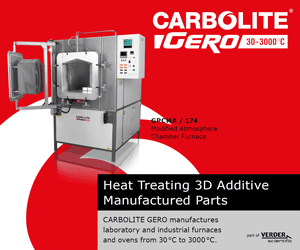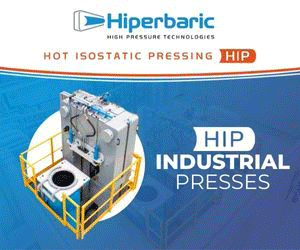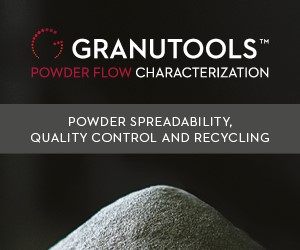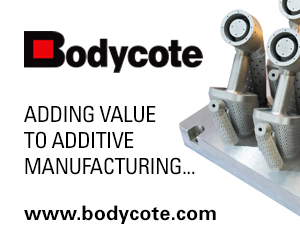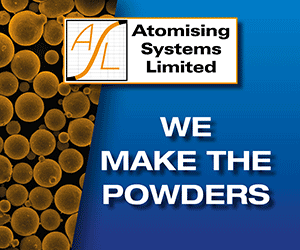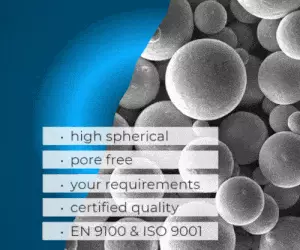Metal Additive Manufacturing, Vol. 8 No. 2 Summer 2022
Prefer a PDF download? Click here
In addition to the latest industry news, this 176-page issue of Metal Additive Manufacturing magazine includes the following exclusive features:
Transforming access to medical implants: How PrinterPrezz and Additive Manufacturing will improve global healthcare
Some companies have bolder missions than others. Whilst Elon Musk leverages metal Additive Manufacturing to transform space exploration, the founders of PrinterPrezz, Alan and Alexis Dang, Kishore Karkera and Shri Shetty, are aiming to do something equally bold with the same technology: bring safe, affordable, right-fit medical implants to the 97% of the world that can’t currently access them. Todd Grimm interviewed Alan Dang and Shri Shetty to discover more.
| Get PDF | | | Read online |
Anatomy of an AM part failure: Lessons for managers, designers and producers from 2021’s Olympic bike crash
In the men’s track cycling team pursuit qualifying at the 2020 Olympics, broadcast live to a global audience, a handlebar part produced by metal Additive Manufacturing failed with catastrophic consequences for the rider, Australia’s Alex Porter.
Six months later, a forensic analysis of the incident was published as a 170-page report. The good news is that the company that made the AM part, along with the technology itself, were cleared of blame.
So: what went wrong, and what lessons can be learned? Robin Weston digs into the details.
| Get PDF | | | Read online |
What Xerox’s aluminium liquid metal AM offers for supply chain resiliency
It is too easy to look at metal Additive Manufacturing technologies as neatly fitting into a small number of convenient process categories. The risk, in doing so, is that the best solution could be overlooked. One AM process that does not fit into such neat boxes is Xerox’s Liquid Metal Jetting.
Whilst it falls, broadly, under the ISO/ASTM 52900:2015 category of Material Jetting, it is unique among metal AM processes. Here, Bender Kutub considers where it fits into the drive for supply chain resilience, and explores its market potential.
| Get PDF | | | Read online |
Additive Manufacturing for oil, gas and maritime: An evaluation of capabilities and potential
In 2018, a consortium of twenty-three companies, managed by DNV and Berenschot, started a project, ProGRAM JIP, to produce a guideline formulating the necessary requirements to introduce components made by Additive Manufacturing into the oil, gas and maritime industry. This was followed, in May 2020, by ProGRAM JIP Phase II, again managed by DNV and supported by Berenschot. The participants in Phase II spanned the entire value chain, from end-users and OEMs to service providers, material suppliers and testing companies.
Here, DNV’s Sastry Yagnanna Kandukuri and Berenschot’s Onno Ponfoort present the consortium’s preliminary Phase II findings.
| Get PDF | | | Read online |
Multi-material metal parts by Powder Bed Fusion:
New application opportunities
As product developers become more and more aware of the possibilities of metal Additive Manufacturing and the design freedom it offers, metal Laser Beam Powder Bed Fusion (PBF-LB/M) has established itself for series applications in numerous industries.
One novel capability of PBF-LB/M which has yet to be fully explored is the production of multi-material metal parts, which would offer huge new potential for designers in many industries.
Prof Dr-Ing Christian Seidel looks at methods and solutions for the AM of parts consisting of two arbitrarily distributed metal alloys and presents use cases with the potential for series production by multi-material PBF-LB/M in the near future.
| Get PDF | | | Read online |
Findings from Wohlers Report 2022:
Taking a chance on new technologies and the evolving materials mix
Getting to grips with what is really happening in our industry can be a tricky business. Thankfully market analysis is available from a number of expert sources, with the longest established being the Wohlers Report.
Here, Noah Mostow, Olaf Diegel, and Terry Wohlers share insight from the recently published 2022 edition, including an overview of machine sales, the acceptance of a new breed of technology suppliers, the growth of service companies, and the evolving metal AM material mix.
| Get PDF | | | Read online |
The challenge of grain size:
X-ray powder diffraction analysis of parts made by metal AM
X-ray powder diffraction (XRPD) has long been a powerful tool in metallurgy, but its unsuitability for parts with large grain sizes has made its use for the analysis of metal additively manufactured parts a challenge.
In this article, Dr Scott Speakman, Malvern Panalytical, reports on a study in which specimens of soft magnetic Fe-Si steel were made by PBF-LB using a variety of raster and annealing strategies to produce specimens with large grain sizes.
The X-ray diffraction data collected illustrates the tell-tale signs of poor crystallite sampling statistics. Speakman presents some strategies for recovering data fidelity with conventionally available options.
| Get PDF | | | Read online |






